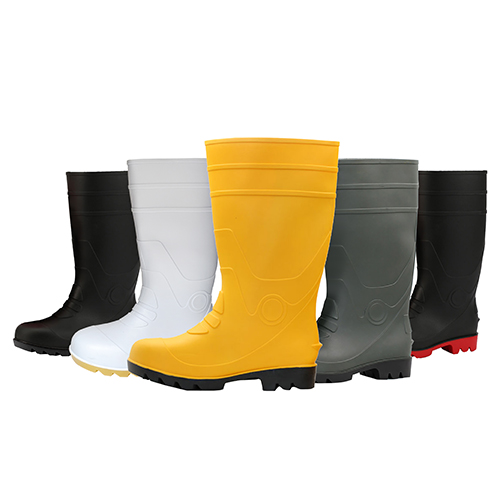Safety shoes as an important personal protective equipment, its safety is reflected in many aspects, the following is a detailed introduction to the safety of safety shoes:

First, protection function
Anti-smash function:
The toe of the safety shoe is usually equipped with an anti-smashing head made of steel or composite materials, which can withstand a certain amount of impact.
According to the national standard of labor protection shoes (such as GB21148-2020), the anti-smashing performance must have both static pressure resistance and impact resistance, pressure resistance 15KN, impact resistance 200J, providing a solid guarantee for the safety of workers' feet.
Puncture resistant function:
The midsole of safety shoes is usually made of steel plate or special materials, which can effectively prevent sharp objects (such as nails, glass fragments, etc.) from penetrating through the sole and injuring the foot.
The anti-puncture force needs to withstand more than 1100N to ensure the safety of workers' feet when working in complex environments.
Anti-slip function:
The sole is made of wear-resistant, non-slip rubber material, and is designed with special anti-slip lines to increase friction with the ground and reduce the risk of slipping.
Although there is currently no national standard specifically for anti-slip performance in China, the safety shoe soles usually exceed the industry standard SRC class, ensuring that they can provide stable grip even in wet or greasy environments.
Insulation function:
For electricians and other occupations that need to contact live equipment, insulating safety shoes block the path of dangerous currents by insulating the sole.
Electrical insulation shoes should not use metal parts and accessories to ensure that the staff is protected from electric shock when working within the specified voltage range.
Anti-static function:
In flammable and explosive environments, anti-static safety shoes introduce electrostatic charges on the human body into the ground through special materials and technologies to prevent safety accidents caused by static electricity accumulation.
The resistance of the anti-static safety shoes is between 0.1 and 1000 megohm (MΩ), ensuring that the electrostatic charge can be dissipated in time.
High temperature resistance function:
In metallurgical, chemical and other industries, safety shoes need to have high temperature resistance to prevent high temperature objects from causing damage to the feet.
High temperature performance usually requires that the temperature inside the shoe can remain within a safe range when the instantaneous temperature reaches 250 degrees Celsius.
Second, materials and processes
Upper material:
It is usually made of natural leather (such as cowhide), artificial leather (such as PU, PVC) and synthetic materials, which has good air permeability and wear resistance.
Sole material:
The selection of wear-resistant, non-slip, high-temperature rubber or TPU materials to ensure stable support and protection in a variety of environments.
Internal materials:
The insole is made of a soft, breathable material that provides enough support and cushioning to reduce fatigue from prolonged wear.
Third, testing and certification
Test items:
Safety shoes need to go through a series of strict testing items before leaving the factory, including sole anti-slip performance, wear resistance, oil resistance, heat resistance, folding performance and upper tension, permeability and other tests.
These testing projects ensure that the performance indicators of safety shoes meet national standards and industry requirements.
Certification and Standards:
Safety shoes need to pass the relevant safety certification and meet national standards before they can be marketed. Common certifications include ISO, CE, etc., while national standards vary according to specific functions (such as GB21148-2020, GB21147-2007, etc.).
Fourth, use and maintenance
Proper use:
When using safety shoes, ensure that the shoes fit and are worn correctly to give full play to their protective functions.
Regular maintenance:
Regular cleaning and maintenance of safety shoes can extend their service life and maintain their good protective properties. For example, regular application of shoe polish and avoiding sun exposure can reduce shoe wear and tear.
In summary, the safety of safety shoes is reflected in its various protective functions, high-quality materials and processes, strict testing and certification, and correct use and maintenance. These factors work together to provide workers with comprehensive and effective foot protection.
Our factory was established in 2003 and we specialize in personal protective equipment, including PVC rain boots, rubber rain boots, EVA rain boots, safety shoes, helmets and other P P E products.
Contact: Lily
Phone: +8618622580676
E-mail: lily@dxyglobal.com
Whatsapp:8618622580676
Add: TIANJIN CHINA